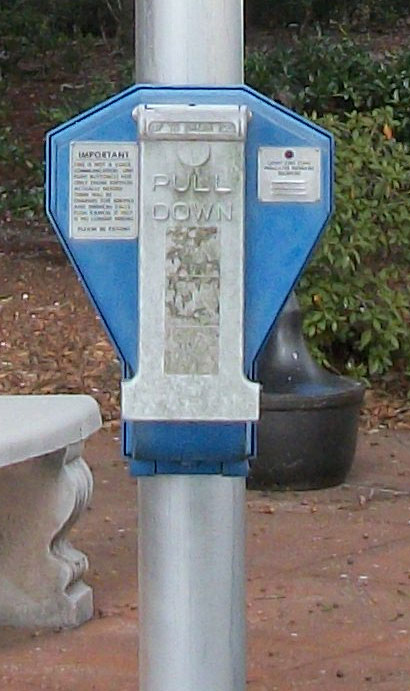Relic Of The Past: Florida Removing Motorist Aid Call Boxes
December 1, 2013
Those motorist telephone call boxes along Florida’s highways will mostly be a thing of memory.
The state Department of Transportation is removing all but a few of the 2,752 push button call boxes from along its highways as personal cell phones have reduced the need for the roadside phones.
 “With cell phone use it was decided to save the department some money,” said DOT spokesman John O’Brien.
“With cell phone use it was decided to save the department some money,” said DOT spokesman John O’Brien.
The removal, estimated to cost around $200,000, has already started.
By not having to maintain the system, including the interconnecting consoles at Florida Department of Highway dispatch offices and base stations, the state is expected to save $1 million a year.
The move will leave Pennsylvania and Hawaii as the only states that offer roadside motorists call boxes.
The boxes were installed in the early 1970s, back at a time when those seeking police, medical or automotive aide would have otherwise had to hoof it or hitch a ride to the closest businesses or residence with a pay phone.
However, for more than a decade the use of the boxes has been on a steady decline, falling from 56,674 calls in 1998 to 22,051 in 2004 and 7,807 in 2012.
“There’s been a dramatic decline in usage over the years,” O’Brien said. “The technology is antiquated and we’re doing a lot of stuff with ITS (Intelligent Transportation Systems programs) and the Road Rangers.”
ITS is a fiber optic system of traffic cameras, overhead message signs, microwave vehicle detectors, travel time sensors, road and weather information sensors, and highway advisory radios that is in place along 1,259 miles of interstate and turnpike. Work began this week putting the system in place in the northwest, along a section of I-10 and U.S. 231, at a cost of $24 million.
Along I-10, from the Alabama line to Jacksonville, the calls have dropped from 3,571 in 2004 to 1,143 last year from 464 call boxes.
Comments
5 Responses to “Relic Of The Past: Florida Removing Motorist Aid Call Boxes”



Around a thousand dollars per call to subsidize those who don’t want to spring for cell phones with GPS locators which can instantly call for help and direct it properly even if they can not walk to the nearest box?
Yank ‘em out to save lives.
Don’t spend taxpayers’ money to hurt people.
By the way ANY cell phone can call 911. You don’t even have to have a working number.
I agree with Terri. Apparently as late as last year they were in use. What about those who happen to have an emergency whose cell phones have died or, worse yet, don’t even own a cell phone? I’ve seen payphones here and there and to this very day people still use them. It’s one thing to leave them alone “just in case” and it’s another thing to wipe them out. So, pretty much, those in need of them will be left to walk, potentially, many miles for assistance. Pitiful, I think.
What about the stubborn Senior citizens who do not USE cell phones?? My father is one of them, I’d like to know he still had a resource if he were to need help.
If they leave it there they have to put something over it so no one uses it. Then they have to maintain that bag, sign or whatever so that it stays there. If they just left it there and didn’t maintain it there is the chance someone would use it and it wouldn’t work and the lawsuit would be phenomenal.
It’s a $200,000 hit now but as the article says, it could save $1 million/year later.
As far as a price on help in an emergency, I’d like to see the stats on how many of the calls they did get from these boxes were duplicates of those they received from cell phones and then which call came first, the cell phone or the emergency box.
so the state has 200,000 dollars laying around to remove these boxes? Smarter and cheaper decision would have been to leave them alone and not try to maintain them…after all what possible harm could they do????And at least 1,143 people used them last year to call for help….can you really put a price on help in an emergency?